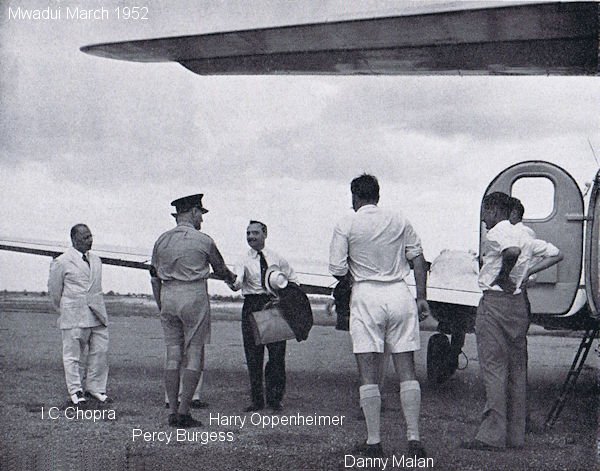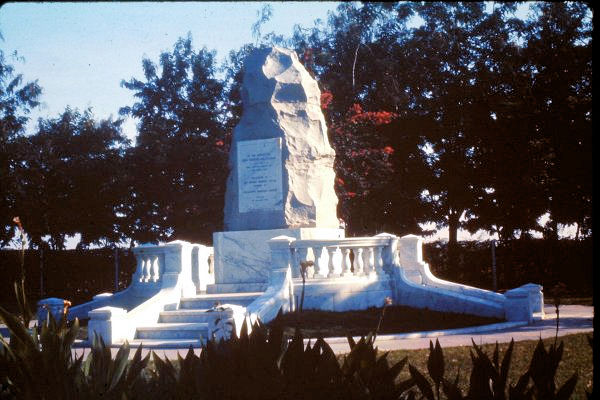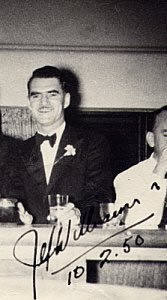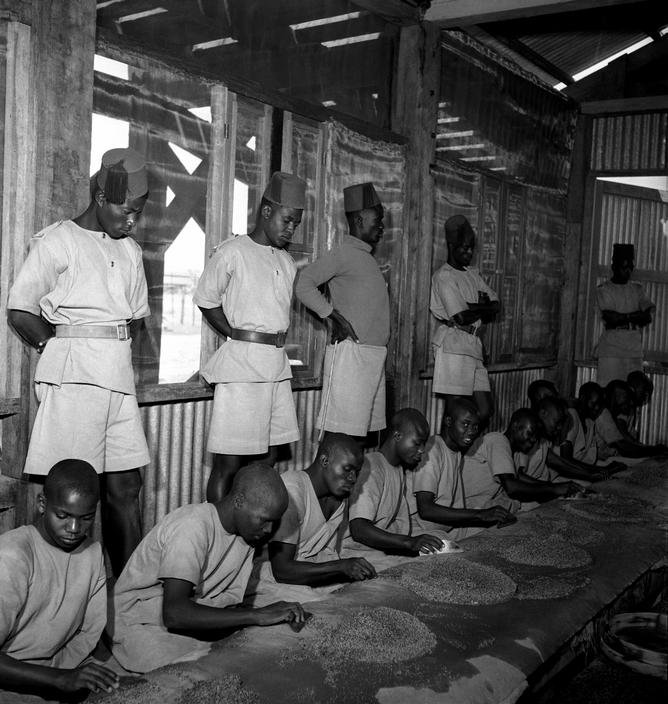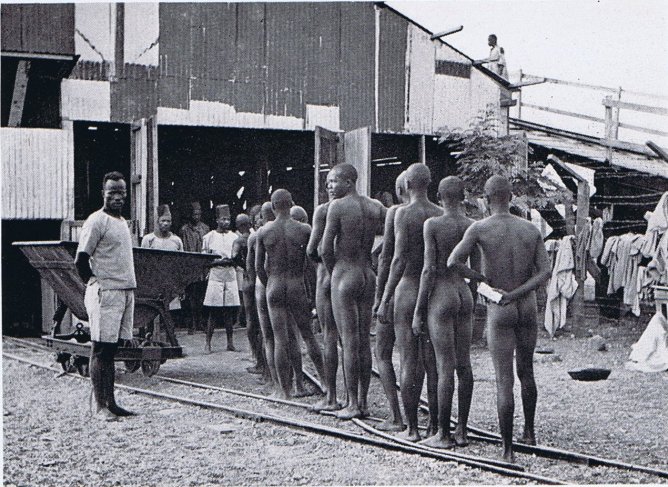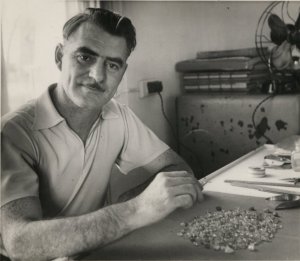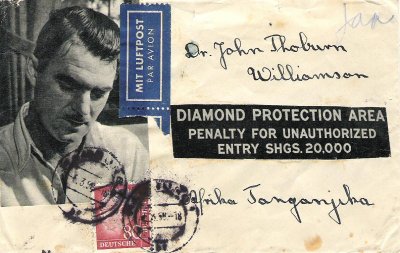|
|
The first generation plant |
The Diamond protection area. |
Moving the ore to the heavy media separation plant The hand hauled wagons were replaced by a two mile ling conveyor belt in the mid fifties.
Photo from the George Rodger-Magnum collection © The heavy plant just got bigger as the money poured in and technology improved. The walking drag-line was the largest in the world with the bucket lifting six tons at a time. As a kid I used to ride in these Euclid dump-Trucks pulling the chain to blast the air horns. Running the ore was a nonstop operation and a 10,000 foot conveyer belt was installed traveling at 500 feet per minute while i lived at Mwadui. |
|
Photo from the George Rodger-Magnum collection ©.
All vehicles in & out of the mine were searched along with all non european personel.
Harry Oppenheimer visiting Mwadui in March 1952 to find a solution to the selling dispute with the Diamond Corporation.
Jack (Doc) Williamson celebrating his birthday 10th Feb 1950 |
Sorting Diamonds 1948
It was estimated that up to 50% of the extracted diamonds were being smuggled out with organized crime. Covert cine cameras were fitted here and many ingenious smuggling methods exposed. Photo from the George Rodger-Magnum collection ©
Diamond sorters endured stripped full body searches, including bending over and touching their toes so they could be examined under torch-light before and after each shift which failed to stem the smuggling. Dr Williamson was reluctant to accept that organized crime was behind the smuggling. Photo from the Burgess family collection ©
Dr Williamson in 1948. He was not convinced that organized crime was behind the smuggling, rather it was just local pilfering, and was not keen on coming down too hard on the local population. Photo from the George Rodger-Magnum collection ©
Doc received letters from all over the world, many with proposals for marriage.

Click here to find Mwadui on Google Maps |
Dr John (Jack) Thoburn Williamson, Doc
Doc and his legal partner, Iqbal Chand Chopra KC, who later became a member of the Tanganyika legislative council, set about establishing Mwadui. Doc told a former business partner Kennedy about his strike and Kennedy registered a smaller strike just outside of Mwadui. Williamson registered Williamson Diamonds Mine Limited on 19th March 1942 in Dar-es-salam with three shareholders, himself, his brother Percy and Chopra, and two directors, Williamson and Chopra. Doc, or Jack, as he was known ran the mine under the legal guidance of Chopra.
Left: Jack Williamson the diamond seeker.
In the first ten years Doc put everything he earned back into the mine and was determined that the local population should benefit from the immense wealth being generated.
Doc stated "I have everything I need in the mine, it is my child, my family, my work and my hobby." He named the new township Mwadui after a local tribal chief as a mark of respect.
Doc bought a house on the outskirts of Nairobi near the Ngong hills and another at Bukoba on the western shore of Lake Victoria with it's mild, sunny climate. Both residences had their problems, at Bukoba the garden was full of expensive imported plants which were repeatedly trashed by herds of hippos during the night-time. Nairobi required a trained guard dog as Doc feared the Mau Mau uprising. He frequently suffered anxiety attacks prior to VIP visits, retreating to his off-mine homes, using a variety of excuses to avoid meetings.
Some estimates put the diamond thefts as high as fifty percent of all extracted gems. With bribery of the local natives rife they were quick to realize the value of the shiny stones and used every trick in the book as well as some that weren't to smuggle the stones off site. Dr Williamson was sure he could handle the situation and was not keen to risk upsetting his relations with the tribes people over a few precious stones being pilfered. The Colonial Government thought otherwise and insisted on hiring a Scotland Yard police officer to combat what they considered to be organized crime. Ex Metropolitan Divisional Chief Detective Inspector Percy Burgess arrived in 1951 to take up the post of Chief Security Officer at Mwadui. He and Doc endured a roller coaster relationship for most of his contracted period of work. Percy Burgess declined to renew his contract when it expired late in 1953 even though Doc offered him lucrative cash incentives.
Doc held concessions for coal exploration further south. The local railway engines were wood burning boilers which meant having wood piles at regular intervals and impacted on the tree population. A local source for coal would alleviate the tree problem.
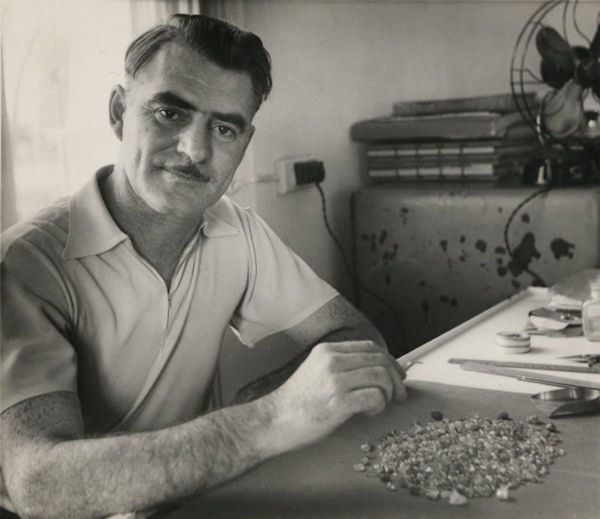
Doc disliked the idea of game hunting and had a great love for dogs, his house was full of mongrels, finding somewhere to sit was a trial in itself. Doc had a superb collection of fine wines and first edition books. He used a second house near the sorting plant as a depositry for the many gifts bestowed upon him including shag piled rugs and furniture.
Doc worked hard and played hard, he was constantly playing practical jokes on the unsuspecting, one night he got all the men in the club to fill the marching band instruments up with beer then play them, another time Doc removed all the furniture from the European club one night, then offering to sell the same furniture back as a replacement. Doc always carried a replica of the famous Williamson Pink in his pocket and was known to drop it in the gravel when in company with VIPs for them to find.
Doc would regularly visit the social clubs of the three ethnic communities, his favorite tipple being whisky and lime juice, he would at times serve behind the bar enthusiastically.
There was a Wurlitzer jukebox with mostly American Country & Western records as well as a one armed bandit. Doc never carried money but he loved to play the bandit on borrowed money. One evening Mrs Mona Fourie requested an IOU which Doc wrote out for her. Doc later forgot all about it and years later Mona produced it, Doc was most apologetic and payed her in full with interest, she kept that IOU from the richest man in the world.
Doc was prone to panic attacks if he had to meet VIPs.He was a shy retiring man who shunned the limelight. During the war years Doc had to procure whatever equipment was available outside the war effort. In 1944 Doc travelled to South Africa to hire mining specialists. After the cessation of hostilities more plant became available and as the money poured in so the manual labour was replaced by heavy plant. Williamson began to plan a model township layout for the operatives. Water was needed in vast quantities. One year in the early fifties the rains failed so Doc financed the building of dams locally, using his heavy plant that was working far below its capacity. The dams took a further two years to fill.
Doc was diagnosed with throat cancer late in 1956, he had been a heavy smoker for many years, often prone to chain-smoking. After travelling the world in search of a cure he returned to Mwadui where he eventually died at 3 o/c in the morning on the 8th January 1958 just a few days before his 51st birthday. Doc was buried at 5pm that same afternoon in the cemetery where it all began at his beloved Mwadui. With Doc's death the spirit of Mwadui died with him, but the diamonds continue to pour out even now sixty years later. A monument of Kimberlite rock set in Italian marble was erected over his grave and the surrounding cemetery was cultivated and planted. His siblings
who inherited the mine had no mining experience and immediately proceeded to negotiate it's sale.
Doc was diagnosed with throat cancer late in 1956, he had been a heavy smoker for many years, often prone to chain-smoking. After travelling the world in search of a cure he returned to Mwadui where he eventually died at 3 o/c in the morning on the 8th January 1958 just a few days before his 51st birthday. Doc was buried at 5pm that same afternoon in the cemetery where it all began at his beloved Mwadui. With Doc's death the spirit of Mwadui died with him, but the diamonds continue to pour out even now sixty years later. A monument of Kimberlite rock set in Italian marble was erected over his grave and the surrounding cemetery was cultivated and planted. His siblings who inherited the mine had no mining experience and immediately proceeded to negotiate it's sale..
Left: John T Williamson & Richard Roberts prospecting with Loangwa Concessions, a De Beers subsidiary, in nortrhern Rhodesia, now Zambia, in the early 1930's


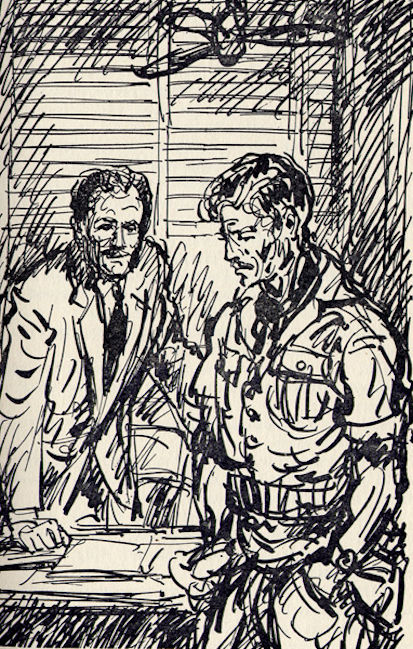
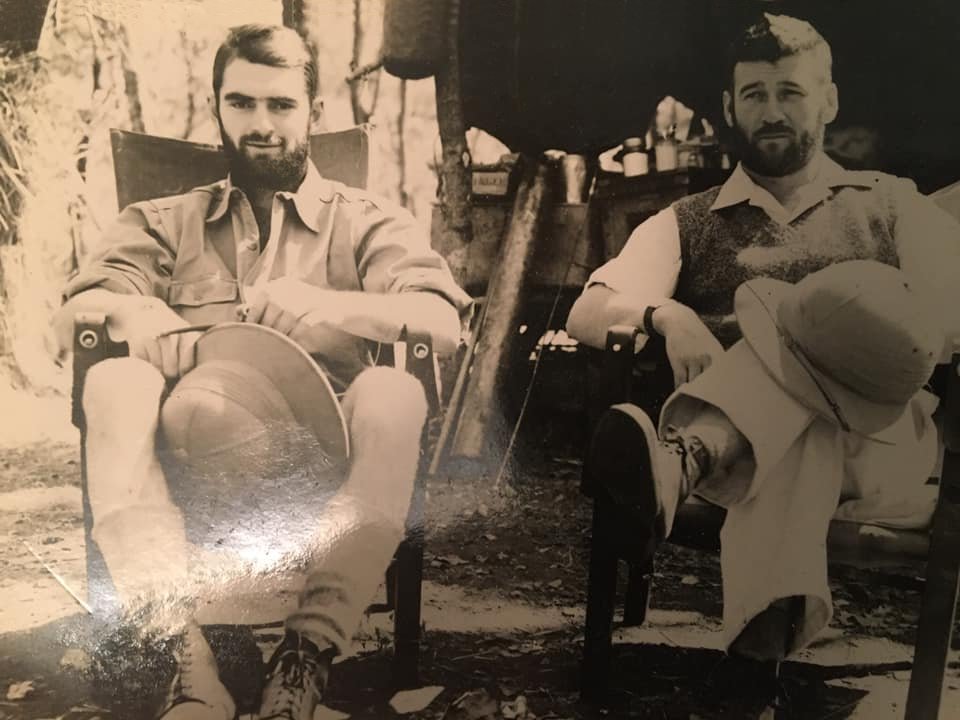 Richard Roberts
Richard Roberts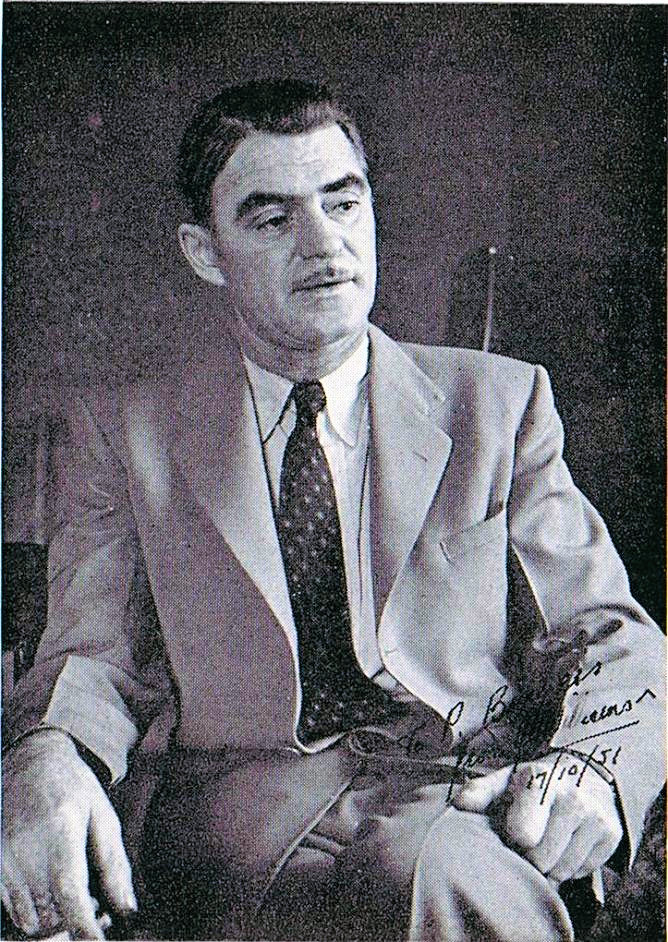
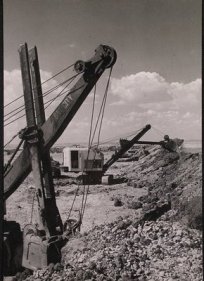
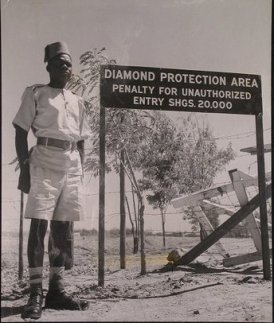
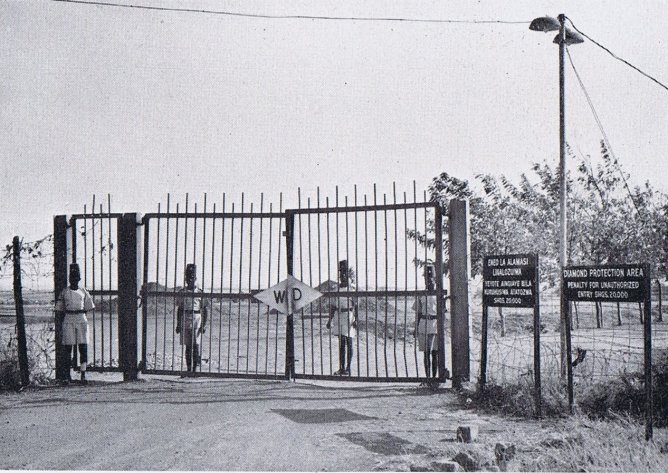
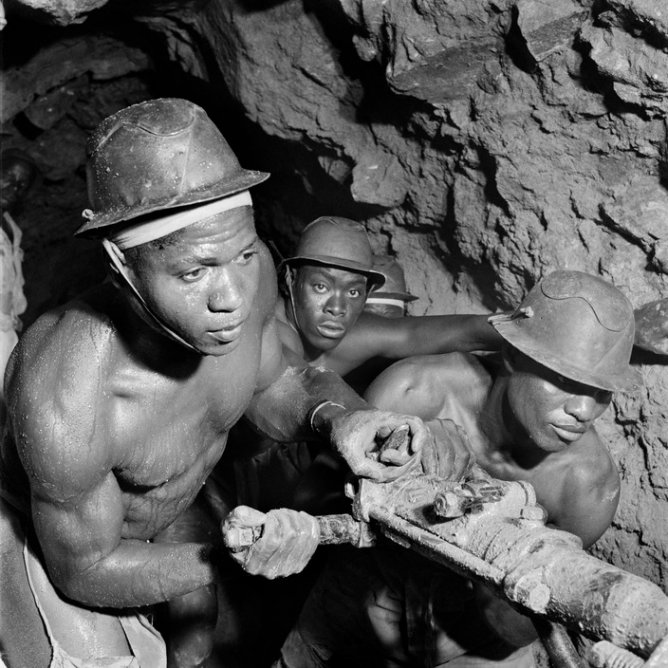
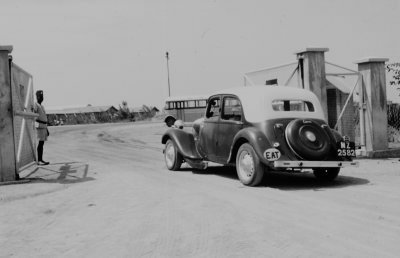 The main gate.
The main gate.